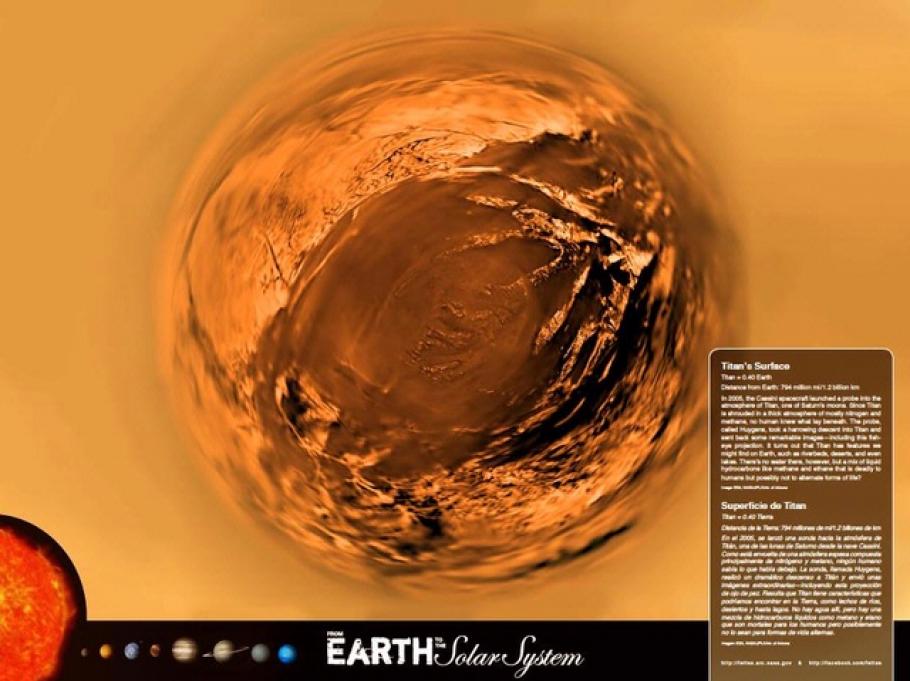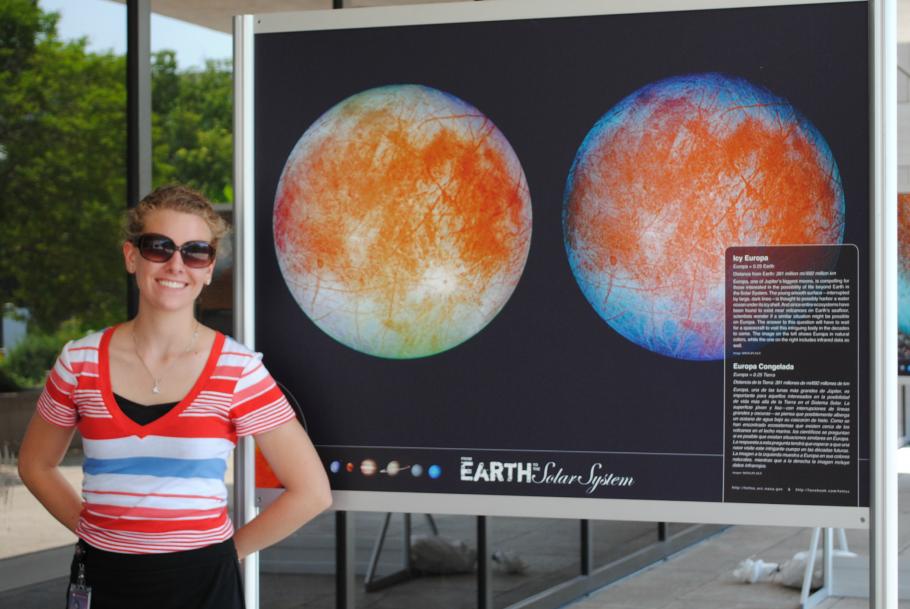For the month of June, 30 beautiful images of the solar system are on display on the terrace by the Independence Avenue entrance. They are part of the From Earth to the Solar System exhibition developed by the Smithsonian Astrophysical Observatory/Chandra with the NASA Astrobiology Institute.
Make connections between our home planet and the rest of our solar system and take an exciting journey from the soil of our planet to the far reaches of cold space. If you aren’t able to make it to the National Mall this month to see the exhibition, a preview is available online, and it will be traveling around the world over the next year.
The amazing images in this exhibition show our efforts to explore other worlds to uncover their secrets. Let’s take a quick tour. Starting with our understanding of the Earth and moving outwards, we apply this knowledge to each world we encounter opening a new window to the limits of our solar system. We begin our investigation with Australian stromatolites, ancient rock structures created by microbes. Next, studies at Mono Lake, CA have revealed a different possibility that life can sprout from unexpected sources such as arsenic. These examples provide two points of reference when studying solar system objects. Titan, compared to an early Earth, may be the home to methane/ethane-based organisms similar to the organisms at Mono Lake. These are only a few connections. More exploration and study reveals ever-increasing intrigue existing between our own experiences on Earth and the many diverse planets, moons, and other bodies within our solar system.
Each weekday of June, we will offer two 15-minute tours at 9:40am and 9:45am. Take a tour about the theme Cosmic Weather and find out about other solar system bodies with seasons. Created and presented by intern Lauren Bittle, this tour discusses the connection between atmosphere and weather on Earth as well as throughout the solar system. Highlights of this tour include solar activity, volcanic Io, and the great storms of the solar system. What would our moon look like if it were covered in volcanoes? Take the A Myriad of Moons tour, created and presented by intern Ameé Salois, and learn the answer, along with many other facts about the diversity of moons in the solar system. Highlights of the tour include investigations into our own Moon; Io and Europa, moons of Jupiter; and Titan and Iapetus, moons of Saturn.
Please come join us for one or both of these exciting journeys through the solar system.
From Earth to the Solar System is a continuation of the 2009 exhibition From the Earth to the Universe, created for the International Year of Astronomy, which visited the Museum that summer. The National Center for Earth and Space Science Education is helping coordinate exhibit locations.


